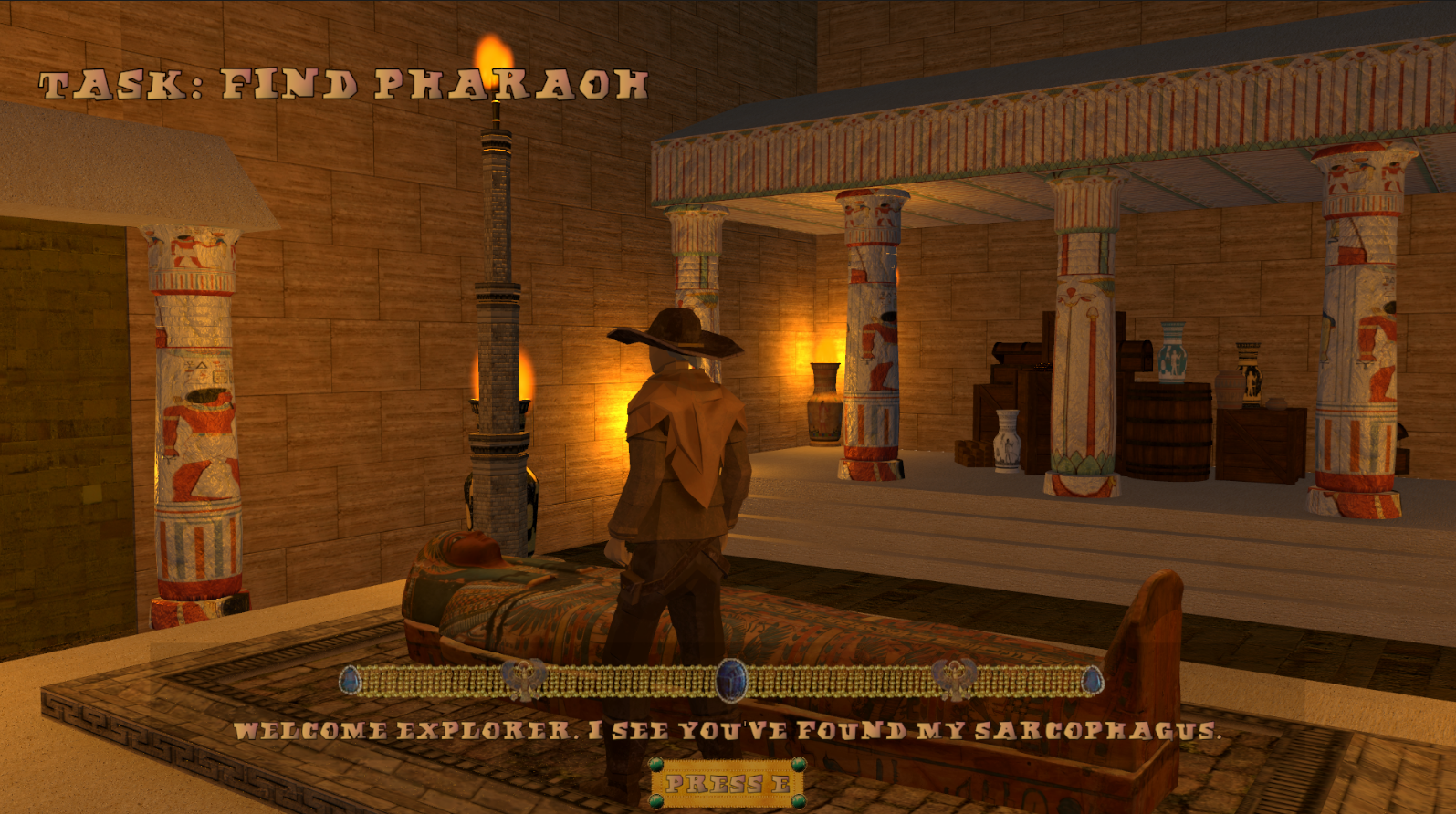The goal of this project was to learn and use game design principles. I gave myself the additional goal of making an educational game, because I’m interested in the Serious Gaming industry.
Narrative design
The game aims to invoke a sense of curiosity and an interest in the history of Ancient Egypt.
The game has two characters that have dialogue; The pharaoh is a character who has been alone for a long time, so he behaves a bit peculiar. It is as though he has forgotten how to interact with people while maintaining the personality traits that come with being a monarch. Traits like easily deciding over life and death or asking a random person to do things for him, like finding his cat. The sphinx is a vain creature, it believes itself best and others inferior. It likes to make its sentences as well as its riddles complicated. I made its sentences as complicated as I could, while maintaining clarity.
Level design
Aside from height differences, the level design is very straightforward. This is because pyramids have very square rooms and hallways. To resemble the inside of a pyramid even more, the lighting is very dim and comes solely from torches. I spend a lot of time making sure all the assets fit together and make the game look like a realistic Egyptian pyramid. The puzzles increase in difficulty.
UI
There is a task in the top left corner and a dialogue box along the bottom of the screen. The font is readable but looks Egyptian. The button and divider in the dialogue box are made in photoshop using images of Ancient Egyptian jewelry. The gemstones are Saphire, Lapis Lazuli and Turquoise, which were commonly used in Ancient Egypt. The divider has a hawk jewelry piece. Hawks are often featured in Ancient Egyptian Mythology.

SFX
I implemented Sound Effects to give the player feedback. Sounds play when doors open and when puzzles are solved.
There are four Background music tracks in this game, one for the menu and one for each room. The music reflects the mood the player should feel for each puzzle. They are edited into seamless loops using Ableton and flow over to each other in different rooms using Fmod.
Playtesting
I made changes to the game based on playtesting. I did playtests were I looked at what the player was doing without interfering and wrote down my observations. I also did playtests were the testers filled out a google form. Based on this feedback, I balanced the puzzles better, made changes to the explanation of the game at the start, added more sound effects and changed the dialogue and made some smaller changes. I used the form to check if the immersion was good, and if players actually learned something about Ancient Egypt. Both of these values were satisfactory during the last playtests.